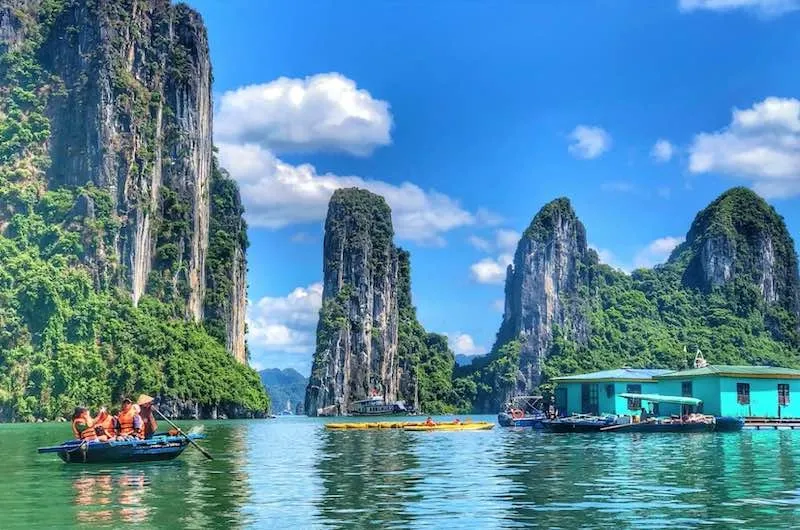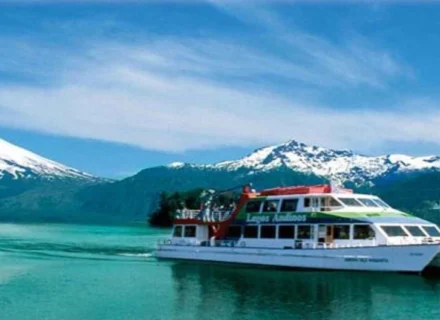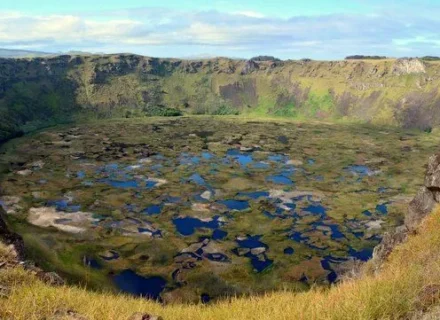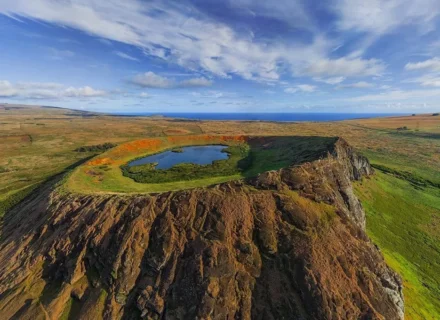Vietnam hugs the coast of Southeast Asia, sharing borders with China, Laos and Cambodia. It is the easternmost country on the Indochina Peninsula. The biggest international airports in Vietnam are located outside of Ho Chi Minh City and Hanoi, both are excellent starting points depending on whether you will travel the country North to South or the opposite way.
- A direct flight from London to Hanoi will take 11 hours, and to Ho Chi Minh a little more at 12 hours.
- From Sydney you can reach Hanoi in 9.5 hours on a direct flight or fly for 8.5 hours to reach Ho Chi Minh City.
- Flying from Toronto will require one stop over with travel time around 20 hours. Both Hanoi and Ho Chi Minh City have daily regular flights from Bangkok, which is a main hub for many international flights.
- For those already in southeast Asia, there are various low cost airlines flying daily into both Hanoi and Ho Chi Minh City. Bus travel between countries is also possible.
Main airport for
Vietnam
Noi Bai International Airport, the biggest in Northern Vietnam, is located 45 kilometres from Hanoi city centre. Airport Code: HAN.
Tan Son Nhat International Airport, the largest in Vietnam, is located only 6 kilometres from Ho Chi Minh City centre. Airport Code: SGN.
Geography and landscape
of Vietnam
While Vietnam is not a particularly large country, it is a very elongated one. Vietnam has a land area of 310,070 kilometres squared, making it roughly the same size as Japan, Italy and the UK. At the narrowest point in Vietnam there is only 30 miles between east and west. The tallest mountain is found in northern Vietnam, Fansipan, and sits at 3143 metres, while the country also boasts two large rivers, the Mekong in the south and the Red River in the north. Both of these rivers form vast deltas in the surrounding area where the majority of the population live due to the fertile lands needed for agriculture. Vietnam also boasts a beautiful coastline with many beaches – some of the best are found in Nha Trang, Hoi An and dotted below the Hai Van Pass.
Culture, Religion
and Etiquette
Vietnam remains a communist country and therefore has no official state religion, with people possessing the freedom to worship as they please. The most common religion is Tam Giao, known as the triple religion, which is a combination of Confucianism, Taoism and Buddhism. It is sometimes referred to as the Vietnamese folk religion and around 70% off the population are said to follow it. Other, smaller recognised religious groups include Catholic (7%) and around 75,000 Muslims.
When visiting temples or sacred sites it is important for both men and women to dress modestly, covering shoulders and legs to at least the knee. Footwear and headwear should be removed before entering a temple. It is considered disrespectful for tourists to have tattoos of Buddha and it is therefore recommended to ensure these are covered when entering temples.
When greeting someone, Vietnamese will typically shake both hands and bow their head slightly. Hello is xin chào (seen chow) and attempting to greet people in Vietnamese is generally greatly appreciated. Elders are respected, are given right of way and are typically served first.
Photography
Vietnam has a stunning landscape and a host of wonderful sites that are extremely photogenic, such as Halong Bay and the town of Hoi An. The local people are generally very friendly and happy to be photographed, but it is important to ask and also polite to share with them where they can find the photo, whether that be on social media or an email address.
Photography at border crossings or other official military postings is prohibited and may result in arrest. Should you come across demonstrations or protests, it is important to leave immediately and whatever you do, do not take photographs. This is highly prohibited and can lead to arrest if the local authorities spot you.
Be aware and respectful when photographing religious sites. If locals are in prayer, never interrupt the situation for a photograph and always double check the entrance for signs either allowing or prohibiting photography. Ensure the flash is off, as not only can it disrupt locals it can also damage murals. Selfies at certain religious sites can also be seen as disrespectful, so be aware of your surroundings and use common sense.
Languages Spoken
The official language of Vietnam is Vietnamese. Occasionally, mountain tribes will have a language of their own with Vietnamese being their second language. English is spoken in the hospitality industry and generally visitors will not have issues communicating. Shopkeepers or market stall vendors generally have a low level of English, and some basic hand gestures and improvisation is needed. This is all part of the fun! Travellers are recommended to learn how to say a few words; hello (Cháo), thank you (cám ơn) and goodbye (Hẹn gặp lại) will go a long way!
Capital City
Hanoi is the capital city of Vietnam. Not to be confused with Ho Chi Minh City, which is the most populous and largest city in Vietnam.
Population of Vietnam
The population of Vietnam is 95 million people. The most populated city is Ho Chi Minh City, with around 7.2 million people. Hanoi is home to 3.7 million, Can Tho 1.2 million, Da Nang 952,000 and Hoi An around 120,000.
Money
The currency in Vietnam is the Vietnamese Dong. The majority of cash comes in paper notes, however coins do exist even though they are slowly being phased out. The VND 10,000 is the smallest bill you will likely come across, with the limit being 500,000. The many zeros can take a while to get used to, so it is suggested that visitors use an app that works offline when checking the currency. Occasionally, local vendors will short change you in the hope you don’t notice the missing zero. US Dollars might be accepted in some places, with some hotels and transport suppliers quoting in dollars.
It’s advisable to carry cash with you in Vietnam, at least for emergencies should there be any problems with your card. Get some notes in small denominations when you change money to help when paying for taxis, entrance fees, snacks and temple donations. Traveller’s cheques aren’t accepted in Vietnam.
Many countries have strict rules on the age and quality of foreign cash. We therefore recommend if you can buy them locally, you bring only new, unmarked and undamaged bank notes. This includes your Local Payment on tours where required.
Tipping
Tipping is not uncommon, but it is not customary in Vietnam. It is not a common habit of the locals however with the rise of tourism brings the expectations that international tourists tip. It is appreciated by local guides if you have booked their service, and should be considered at restaurants if you have received excellent service. Smaller establishments, taxis, hotels and markets do not expect tips and will not bat an eyelid if you give the exact money, however again it is always appreciated if you enjoyed the service. Spas are generally the only place where tips are almost expected, even by locals, as the services are usually cheap and the staff work for very little.
Credit Cards
Most hotels, restaurants and shopping centres accept credit cards. American Express is accepted in larger hotel chains and occasionally other establishments so it is always recommended to also travel with a universal credit card such as mastercard. Markets only ever accept cash, as do some smaller cafes and restaurants. Services such as taxis and guides will usually also only operate with cash.
ATMs and banking
ATMs are widely available in major towns and cities across Vietnam, less so in the countryside, and most (though not all) should accept international debit and credit cards such as Visa or Mastercard. For security, only use ATM machines that are attached to banks or major hotels. Be careful when withdrawing large sums of cash from ATMs, as millions of dong can quickly add up to a thick stash of cash. It is recommended not to withdraw all your money at once, while paying ATM fees are an inconvenient expense the peace of mind of not carrying all your cash on your person at once should be worth it.
Banks are usually open from 8:00 to 11:30 and then again from 13:00 to 16:00. On Saturdays, banks usually open for the morning only from 8:00 to 11:00. All banks are closed on Sundays.
Visas
A Tourist Visa is required for most foreign nationals entering Vietnam. For visitors travelling on a British passport, it is possible to enter Vietnam for a maximum of 15 days (inclusive of the entry and exit days) without a visa. For visits up to 30 days, travellers can apply for an e-visa online before travel. For visits longer than 30 days, it is essential to get a visa from the nearest Vietnamese embassy before travelling to Vietnam. Allow up to six weeks for this process.
For Australian, New Zealand, American and Canadian passport holders, a visa is required. For stays up to 30 days an e-visa can be applied for online. For visits longer than 30 days, it is essential to get a visa from the nearest Vietnamese embassy before travelling to Vietnam. Allow up to six weeks for this process.
All passport holders must have a minimum of six months validity on their passports.
Is it safe to drink tap water in Vietnam?
Unfortunately it’s not safe for visitors to drink the tap water in Vietnam due to the risk of illness from water borne diseases, bugs and parasites. Bottled water is widely available in shops, hotels and restaurants and is very low in cost. Many hotels will also provide free bottled water in the rooms. Be cautious when buying bottled water off locals selling it on the street or near attractions, and make sure the cap is sealed. The use of ice can be more tricky, however most restaurants and cafes buy ice from companies and so it is safe to drink. If you are unsure always ask for your soft drink without ice. Brushing your teeth in the water is a personal choice – while it is fine for the most part if you have a sensitive stomach you should stick with bottled water.
Vaccinations and travel health
Travel health advice may vary slightly according to your country of origin. In the UK, travellers are recommended to stay up-to-date with routine vaccinations (including but not limited to) MMR (measles-mumps-rubella), and diphtheria-tetanus-polio vaccine.
Most travellers are recommended to have tetanus, typhoid and hepatitis A vaccinations for visits to Vietnam. Some travellers may be recommended to have vaccinations for hepatitis B, Japanese Encephalitis, rabies, and tuberculosis. You may need proof of having had a yellow fever vaccine if you’re arriving from or have recently travelled to a country with a risk of yellow fever.
Take precautions to avoid mosquito bites throughout the day, from dawn to dusk, as there are some mosquito-borne diseases such as dengue present in Vietnam which cannot be prevented by vaccines. If you do develop flu like symptoms while travelling Vietnam, visit a doctor who may refer you for a blood test if they suspect Dengue Fever.
We recommend that you speak to your GP or local travel health expert for country specific, professional medical advice, ideally 4 to 6 weeks before you travel. See the CDC’s travel advice or Public Health England’s travel advice for further information.
Electricity and Plugs in Vietnam
Electricity in Vietnam runs on 220 volts at 50Hz. In general, type A, C and F plugs will fit into most Vietnam power outlets. In general they use a European plug with two circular metal pins but in some rare cases it is also possible to find a flat two pronged socket as used in North America or a 3-pin India-style socket, so it is best to take a universal adaptor and cover your bases. Power outages are not uncommon in the countryside, so be prepared for erratic power supply.
Emergency calls
Save these numbers on your phone in case of emergency in Vietnam:
- Police: 113 – for the nationwide dispatch service
- Fire and rescue: 114 – for fire and non life-threatening medical situations
- Ambulance: 115 – for life-threatening situations
Travelling as a single woman
Vietnam is generally a very friendly, safe and welcoming destination for tourists. The vast majority of locals are kind, generous, helpful and accommodating, and most solo female travellers have a great time here. It is good practise to be cautious in big cities and crowded areas and always keep your valuables in a bag with a zip, carrying it on your front. Petty theft is common in any major city and Vietnam is no exception.
If you’re heading out at night, it’s a good idea to dress modestly and travel with others. Let your hotel and/or Tucan Travel tour leader know where you’re going and take a licensed taxi that has been recommended and booked by your hotel. It’s not advisable to take an unknown taxi alone late at night. In any case, change to a different one if you’re concerned about the driver or the standard of driving.
Group tours provide an opportunity to make new friends travelling on a common itinerary – for instance, 60% of Tucan Travel tours are made up of solo travellers enjoying the company of like-minded adventurers.
Keep your friends and family up-to-date with your adventures on social media, text or the odd email – they can always raise the alarm if they don’t hear from you as expected.
Travel Tip!
Grab, much like uber, is common in Vietnam. You can link your card to the app so you have a set price and do not need to deal in cash. You do require either data or a wifi connection to book the driver but this can be done from your hotel or a cafe. With Grab you can choose between a car and motorbike. Remember if you choose the motorbike option it is rare for drivers to have or provide helmets, therefore for peace of mind and a safer journey a car is the best option.
Wifi and internet access
Wifi is available at most hotels and guesthouses in Vietnam, although rarely in homestays. Mobile data is fairly quick in larger towns and all cities (around 3G) however this can be very costly so check your payment plan before switching on data roaming. Free public wifi is common in many cafes and restaurants and this is usually advertised by the entrance. It is fairly simple to pop into a cafe for a coffee just to use the wifi.
Time Zone
Vietnam (IST) is 7 hours ahead of London (GM T/UTC), 4 hours ahead of Sydney and 12 hours ahead of Toronto. Vietnam does not have a daylight saving time clock change, as it observes Indochina Time. Visit timeanddate.com to calculate the time difference for your location.
Getting around Vietnam
Rail
Rail is the most relaxing and picturesque way of travelling Vietnam, as you can experience the beautiful scenery outside your window and meet locals on the way. Air conditioned trains link Hanoi, Hue, Da Nang, Nha Trang and Ho Chi Minh City, and an overnight journey is often the preference as it also saves on the cost of a hotel and takes visitors from city centre to city centre. Currently, Ho Chi Minh City is still referred to as Saigon and when choosing your destination it will show as Sai Gon. Most trains have both hot and cold water dispensers, meaning you can take powdered soup, instant noodles or coffee.
There are five classes on trains in Vietnam:
- Air conditioned hard sleepers: These cabins have 6 berths consisting of lower, middle and top beds. They have power sockets and bedding. This is a great option if you have a group of 6 friends and can fill the cabin! They are much the same as 4 berths except a little more crowded. As expected, the beds are a little less comfortable.
- Air conditioned soft sleepers: These cabins have 4 berths and are generally more comfortable than the hard sleepers simply because there will be less people and more space. They can be locked from the inside and provide reading lights, pillows and a sheet as well as power sockets. This is the ideal choice for overnight journeys. If you are a travelling couple and don’t mind paying for privacy, it is possible to book all 4 spaces in the berth.
- Air conditioned soft seats: These are recommended for daytime journeys. Some have power sockets but it can’t be guaranteed.
- Air conditioned hard seats: These are hard, wooden seats in an air conditioned car. They are not comfortable, but perfectly acceptable for short journeys.
- Ordinary hard seats: These are the same wooden seats but in an older and non air conditioned car. While pretty uncomfortable, these are the only cars with windows that open so can be great for photography.
Road
Getting around Vietnam by bus is relatively easy and a cheap way of travelling. There is an extensive network of buses, with modern and comfortable buses running on all the main highways. For those eager to get off the beaten track and into the sticks, expect crowded and uncomfortable local buses, although this is all part of the adventure!
Air
Options for domestic flights are very good and reasonably priced. The three main carriers are Vietnam Airlines, Jetstar Airlines and Vietjet Airlines. It is possible to find one way tickets for very cheap, especially on basic fares where you do not require checked luggage or meals. Air is the fastest way of travelling Vietnam if you are short on time.
Bike
Hoi An is the perfect destination to rent a bike and cycle the charming streets, all the way down to the beach and through the rice fields. Most hotels here offer them free of charge. In other cities, it is possible to rent bikes to explore the area. It is always recommended to ensure the rental company provide a helmet and always test the breaks before you depart.
Private Drivers
There are various local companies who will offer private cars for day trips, you can often find information in the hotel reception or on Tripadvisor. Always check recent reviews and compare the prices.
Taxis, motorbikes and tuk-tuks
Taxis are common in all towns and cities and you will have no problem finding them waiting outside airports and train stations. Always ensure you have your accommodation address written (preferably in English and Vietnamese) as most taxi drivers speak limited English.
Motorbikes are the most common mode of transport for locals in Vietnam. Motorbike taxis are common but are not convenient if you have luggage. Drivers often do not provide helmets so car taxis are the safest option for getting around.
Taxi drivers are often willing to work for a fixed, pre-agreed fee (plus tip) as full-day chauffeurs, so it’s worthwhile asking your hotel for a referral if you’re short on time to visit the city sights, or you’re planning your own day trip. Be prepared to insist on following your own itinerary – drivers may try to stop over at shops or restaurants where they receive commission.
Tuk-tuks are not common in Vietnam, transport is either car, motorbike, scooter or moped.
Travel Tip!
Crossing the road in Vietnam can seem like a daunting experience. Bear in mind they do not want to hit you, and so will slow down or swerve as you walk. Be patient, find your opening and walk with purpose, whatever you do don’t stop in the middle of the road. Ideally, position yourself next to a local and shadow them across the road!
History
While Vietnam is most known for the Vietnam War (as known in the West, however in Vietnam it is referred to as the American War), in the 1960s and 70s, the history of the country is far longer and richer than those events, with Vietnam contending with many nations before the Americans arrived. Vietnam has been inhabited since prehistoric times, with a recorded history dating back to mid 3rd century BC. The earliest inhabitants of Vietnam practised agriculture and rice cultivation, living near the Red and Delta rivers. From the 1st to 6th centuries AD, the majority of southern Vietnam was ruled by the Funan kingdom, which was based around the Mekong Delta and traded with China, India, Persia and the Mediterranean. In what is now considered Central Vietnam, the Hindu kingdom of Champa was found from around the 2nd century until it was eventually annexed and absorbed into Vietnam. Around the same time, North Vietnam was fighting its own battles as the Chinese conquered the Red River Delta which resulted in 1000 years of Vietnamese resistance to Chinese occupation. The most famous act of rebellion during this period was the two Trung sisters who thought of themselves as the queens of Vietnam, famously drowning themselves preferring to take their own lives than surrender to the Chinese. During the 17th and 18th centuries two rival families held power, the Nguyen to the South and the Trinh to the North, meaning Vietnam was effectively divided.
By the 10th century Vietnam claimed back its independance and remained in this state for almost 1000 years. In the mid 1800’s, Vietnam again found themselves defending their country when it was invaded by France. French colonial rule was harsh with the country slowly being taken over in stages. They built roads, bridges and railways, heavily taxing the local population. Ho Chi Minh, a name you will hear frequently in Vietnam, founded the Vietnam Revolutionary Youth League in 1925, followed by the Viet Minh in 1941. This communist group resisted Japanese invasion during the second World War while the French also attempted to reassert their power. By 1954 the Viet Minh had overran the French garrison. At this stage Ho Chi Minh officially declared Vietnam as independent.
After the Geneva Accords were signed, still in 1954, the South and North of Vietnam remained divided. The South was ruled by anti-communist, government led Ngo Dinh Diem. The North was ruled by the communist Democratic Republic of Vietnam. It didn’t take long before the divide of a nation caused the formation of a guerilla fighting unit known as Viet Cong to rise up and fight the south, ultimately trying to reunite Vietnam as a communist country.
Gradually the USA became involved in the war. In 1950 military advisors were already in south Vietnam, supporting the French and the South Vietnamese government. The conflict was long, and escalated in 1968 when North Vietnamese troops launched attacks across the South, also known as the Tet Offensive. US troops, having waited for a reason to do so, immediately retaliated with heavily bombing the North, resulting in the killings of thousands of troops as well as innocent civilians. Public tolerance (especially in America) for the war was reaching breaking point, and ultimately the Viet Cong had won, making the cost of continuing the war unacceptable for US troops. In 1973 the Paris Agreement was signed, set out of completely withdraw US troops and stop ceasefire between the North and South. By 1975, Saigon surrendered to the North. What followed was large scale oppression with many Vietnamese fleeing as refugees.
Modern day Vietnam is prosperous, optimistic and enjoys greater stability, economic growth and diplomatic relations. In 2000, Bill Clinton became the first US president to visit Vietnam. In 2016, Barack Obama fulfilled his promise of visiting Vietnam before his term in office had expired.



